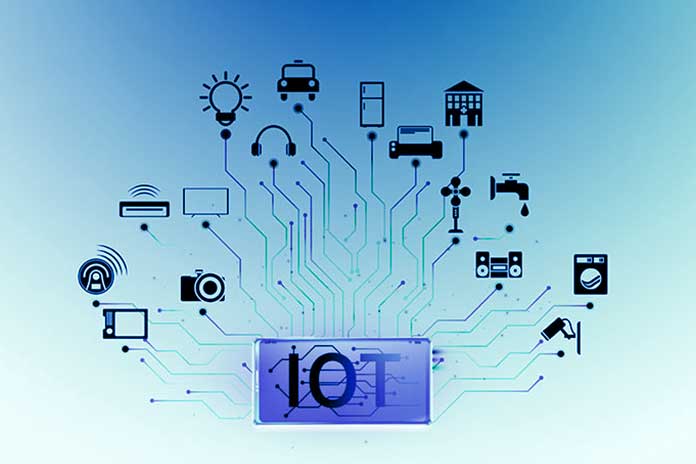Today, the Internet of Things is available in three forms: Smart Home, Smart World, and Industrial IoT. The three areas are developed to different degrees, and the forecasts do not completely cover each other – so it is worth looking at the details. The critical question that then arises is always the same: What can we do to ensure that the Internet of Things – and thus our digital future – is good?
Smart Home: First Experiences And Biggest Concerns
A smart home is already a competitive market. The study expects the need to continue increasing over the next few years by almost 27 percent per year. In 2022, the demand for innovative home solutions can already reach 4.3 billion euros. The main question in the smart home is: How can we live more efficiently and comfortably?
At its core are challenges such as rising energy prices, a lack of time for housework, security, and the increase in the number of people in need of care. We can solve many of the associated tasks more efficiently and reliably with a networked home. The smart home is an important market for IT companies. A truly meaningfully networked home is an ecosystem that includes telecommunications service providers and utilities, artisans and household appliance manufacturers, logisticians, and food suppliers.
These actors can be divided into six segments: energy management, light and window control, security and access control, entertainment, household appliances, and health and assisted living. From the perspective of the residents of a smart home, because of this diversity, it is clear that the many different solutions only make sense if they can all be operated together via a single central control unit.
An example of a so-called open system is an intelligent system of surveillance cameras, which when entering the apartment not only registers who is in the house via facial recognition and triggers the alarm system to be switched off but also automatically unlocks the door, activates the entertainment system and the Turns on the lights in the entrance and living area.
Also Read: Why Blockchain And IoT Belong Together
Smart City: Sustainable And Holistic Living In The City
The study estimates that the associated market will grow by more than 16 percent per year and reach 43.8 billion euros in 2022. The most fantastic promises of the intelligent city arise from the most significant problems that life in the town brings: traffic chaos, increasing pollution and problems with pensions, efficient supply of essential goods such as energy and food, and, of course, security.
Just like in the smart home, the smart city is only conceivable as an ecosystem. However, the number and diversity of actors are even more significant here. The study names ten segments: transport and logistics, communication services and network security, physical security, building automation, healthcare, energy, tourism and retail, education, financial services, and public administration.
At first glance, solutions in the Smart City area are less dependent on the acceptance of end customers, but the focus is still on the individual residents. A prime example is Dubai, a city that already offers more than 1,000 different intelligent city services from a wide variety of segments and relies on an open and cross-segment platform concept. The improvements not only take place in the background but can also be felt in everyday life, for example, in the flow of traffic and CO2 emissions.
Industrial IoT
At first glance, the numbers in Industrial IoT do not look that much different for Smart Homes and Smart cities. The study expects around 19 percent annual growth and a volume of 16.8 billion euros in 2022. Nonetheless, Industrial IoT differs significantly from Smart homes and smart cities.
Increased efficiency and automation: These are the two primary goals usually to be achieved with Industrial IoT projects. How far companies have progressed on this path can be seen particularly well from a key figure: the robot density. The study names seven segments: automotive, mechanical engineering, electrical and electronics, metal, other manufacturing industries, utilities and construction, agriculture, and forestry.
Also Read: Security Down To The Last Corner Of The Industrial IoT
What Can We Do To Make Our Digital Future A Good One?
Smart Home, Smart City, and Industrial IoT: There is enormous potential in all three areas, and similar factors are decisive for success in all three areas. One of the most important, perhaps the most important, is whether we will succeed in networking. The future does not belong to individual solutions but ecosystems. Open interfaces, everyday standards, centralized operation, uniform user guidance, cooperation instead of competition: these are the factors that matter in the IoT.
We should use the full potential: Not just from IoT – but digitalization as a whole, not just for the economy but also for society. If we want to do this, we still have to work on our digital competence. Digital competence is not exclusively of a technical nature. It starts in our heads and has a lot to do with confidence, foresight, and sovereignty. It has to do with the will to embrace change and shape the future.
In the smart home, smart city, and the industrial IoT, this means thinking beyond borders, especially those within your own company. Bundling competencies. Create common standards, especially when it comes to data protection and transparency. Listening to the customer, and not just when the product has been delivered but starting with the design. Find the right balance between control and openness.
Trust that everyone involved will drive better when they drive together. In short: get involved in the digital ecosystem. As an industry representative, I appreciate such insight and determination. As far as the IoT is concerned, I can say: This shows that change – in the long term and globally – can bring more security and prosperity.


